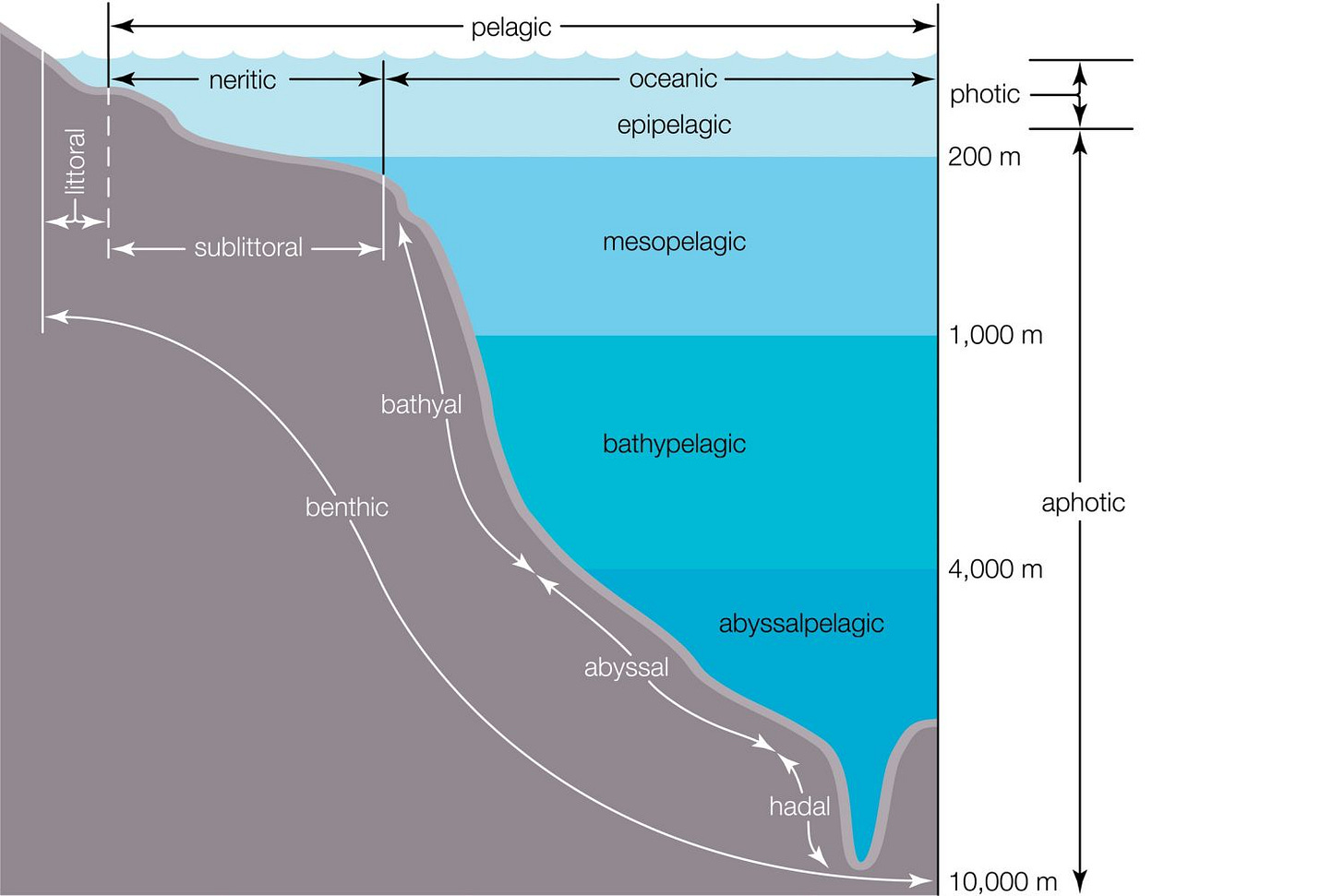Colin Nagy | October 9, 2025
The Mesopelagic Zone Edition
On the ocean's "twilight zone," and blind destruction in the name of salvation.
Colin here. I was intrigued by Dick Bailey’s aside at the end of his MMD—about the ocean’s “twilight zone”—and went down my own rabbit hole, which is basically how WITI works.
As he mentioned, 70% of all ocean life exists in a single layer between 200-1000 meters deep, where sunlight never reaches. This “twilight zone” harbors more biomass than all other ocean layers combined, yet we know more about the surface of the moon than we do about this underwater realm.
The area, called the mesopelagic zone, is essentially Earth’s life support system: the planet’s massive recycling center, processing minerals and carbon while regulating climate patterns that affect every human on the planet. The creatures here migrate vertically every day in what scientists call the largest migration on Earth. Billions of tons of life move up and down the water column, transporting nutrients and carbon between ocean layers.
Why is this interesting?
Our lack of knowledge about this zone reveals how little we understand about the systems we depend on entirely, and how we’re already making irreversible decisions about them. We can’t even accurately count what lives there, let alone predict how our human actions affect those lives.
This gets to Dick’s point in the MMD: we are remarkably organized about separating trash from food at home, but in the ocean, we’ve created a massive mixing bowl. Our pollution, plastic waste, chemical runoff, and industrial byproducts all settle into the same waters where this critical ecosystem operates. The twilight zone becomes both the planet’s recycling center and our dumping ground.
Since 1970, some estimates suggest we’ve consumed over 50% of surface fish populations. Our solution? We’re now looking to fish the twilight zone. It’s like strip-mining your foundation to build a new house on top.
Deep-sea mining companies are also eyeing the seafloor below the twilight zone for rare earth minerals needed for the green energy transition. Let me play that back: Potentially destroying an ecosystem that regulates climate in order to build technology to save our climate.
We’re making decisions about one of Earth’s most important ecosystems while operating almost completely blind.
The twilight zone represents something profound about human knowledge: we can send rovers to Mars and sequence entire genomes, yet the largest biomass on our own planet remains largely mysterious. We’ve likely already lost species and ecological functions we never knew existed, casualties of a system we never learned enough about before we started to take from it. (CJN)
